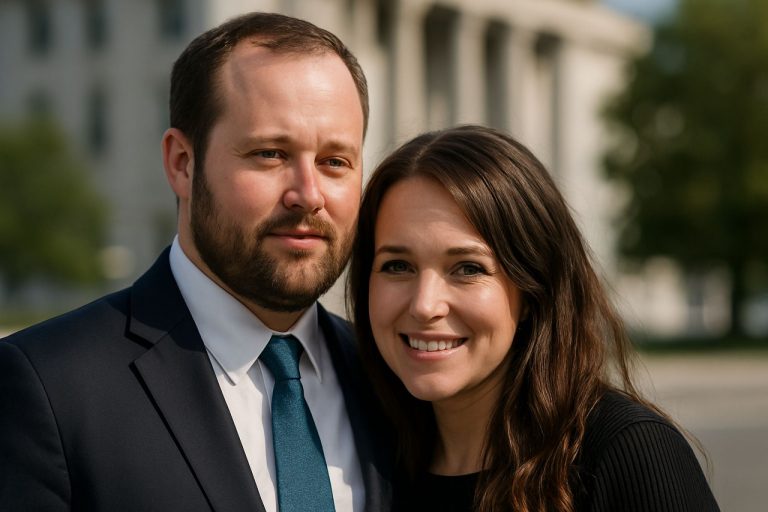
- Warradarge Energy is transforming over 16,000 hectares in Western Australia into a major renewable hydrogen hub.
- The project uses wind power and is strategically located near export channels in the Oakajee Industrial Area.
- Early hydrogen production targets domestic mining and heavy transport sectors, supporting industrial decarbonization.
- Future phases aim to export green ammonia and hydrogen, positioning Australia as a global leader in clean energy exports.
- A$2/kg federal subsidies for renewable hydrogen under the Future Made in Australia plan will boost project viability and competitiveness.
- Strong collaboration among engineers, industry, and local communities strengthens supply chains and project success.
- Australia is leveraging its resources and expertise to drive climate action, energy security, and new industrial growth.
Vast swathes of windswept grassland in Western Australia are poised to spark a transformation. More than 16,000 hectares at Warradarge now serve as the foundation for a renewable energy project that promises to redefine Australia’s role in the global hydrogen revolution.
Beneath soaring turbines and across undulating fields, Warradarge Energy—formerly known as Project MercurHy—is rapidly advancing the next frontier of clean power. Tasked with the blueprint for this audacious project, Xodus, an acclaimed energy consultancy, has secured a prime position in the Oakajee Strategic Industrial Area, where the southern coastline offers not only natural beauty but proximity to key export channels.
The initial phase focuses squarely on the domestic market. Hydrogen produced from renewable sources is set to flow first to the mining giants and heavy-haul fleets that drive the region’s economy—industries long criticized for their carbon-heavy footprints. By integrating wind power and securing agreements with offtake partners, the project is accelerating the path to large-scale industry decarbonization.
Yet, the ambition does not stop at home. Eyes are fixed on the horizon—literally and figuratively—as the project aims to scale up and pivot toward ammonia exports, leveraging Oakajee’s strategic port access. This vision could anchor Australia as a pivotal supplier to the burgeoning Asian and global markets, where the demand for clean ammonia and hydrogen is surging.
Australia already stands as a titan in natural resources, but with an estimated hydrogen market value exceeding A$225 billion, the nation is racing to seize the early lead in green energy exports. Federal support has become a game-changer: renewable hydrogen producers can soon claim a generous A$2 per kilogram subsidy for a decade under the Future Made in Australia plan, drastically slashing production costs and catapulting new projects forward.
Local expertise fuels this clean energy surge. The technical and commercial development at Warradarge is underpinned by a robust supply chain, shaped through close cooperation between engineers, industry stakeholders, and community partners. With commitments from both the public and private sector, Australia is laying the groundwork not just for a cleaner economy, but for a reimagined identity in the global energy landscape.
As international eyes watch this bold experiment, a singular message emerges: Australia is betting big on becoming a dominant force in the hydrogen age—bringing meaningful climate action, energy security, and new industrial opportunities. The winds across Warradarge now carry more than the scent of eucalyptus—they herald a new chapter, where the outback becomes the engine room of a low-carbon world.
Explore more about Australia’s clean energy agenda at Australia.gov.au.
Why Australia’s Giant Warradarge Hydrogen Project Could Revolutionize Global Clean Energy
Australia’s Hydrogen Gamble: The Deeper Story
Australia’s bold move into green hydrogen is more than a story of windswept grasslands—it’s a calculated leap into the future of clean energy, climate action, and economic transformation. Here’s a deeper look at the Warradarge Energy project and what it means for you, for Australia, and for the world.
—
What Sets the Warradarge Hydrogen Project Apart?
Additional Facts:
– Gigawatt-Scale Ambitions: While the source mentions large hectares, Warradarge Energy’s long-term ambition extends to gigawatt-scale green hydrogen and ammonia production, potentially reaching several hundred megawatts of electrolysis capacity in the coming decade (source: Australian Renewable Energy Agency – ARENA).
– Hybrid Renewable Integration: The project is designed to integrate multiple renewables: combining wind, solar, and potentially battery storage. Hybrid sites optimize power production, reduce intermittency, and lower costs (source: CSIRO).
– Water Sourcing: Electrolytic hydrogen requires significant water supply. Warradarge plans to utilize desalinated or recycled water, aiming for minimal environmental impact and water security in a dry region.
– Export-Ready Infrastructure: Oakajee’s port is being future-proofed for liquid hydrogen and green ammonia exports, catering to Japan, South Korea, and parts of Europe—markets expected to drive global demand (source: IEA Hydrogen Report 2023).
– Strategic Industry Partnerships: Early offtake agreements are in negotiation not just with miners, but also with transport and agriculture, diversifying the domestic user base and creating “hydrogen clusters.”
– Job Creation: The project is expected to generate hundreds of construction and long-term operational jobs, providing new economic life to the Mid West region.
—
Real-World Use Cases & Industry Trends
– Mining & Rail Fleets: Mining trucks and heavy-duty rail can replace diesel with hydrogen, drastically cutting on-site emissions and setting new global benchmarks for clean mining.
– Clean Ammonia for Shipping: Ammonia, made from green hydrogen, can be used as a low-emission marine fuel—a critical part of decarbonizing global shipping fleets (source: International Maritime Organization).
– Hydrogen for Fertilizer: Ammonia is also vital for fertilizers, allowing agriculture to decarbonize thanks to emissions-free ammonia.
How-To: Clean Hydrogen Project Development Steps
1. Site Selection: Choose regions with high wind/solar resources and export access.
2. Secure Stakeholders: Ensure support from local government, industry, and community.
3. Infrastructure Development: Build wind/solar plants, electrolysis units, water supply (desalination if needed), and export facilities.
4. Compliance & Certification: Meet Australia’s “Guarantee of Origin” scheme for green credentials.
5. Offtake Agreements: Lock in contracts with domestic and international buyers.
6. Scale Up: Expand capacity as market demand and infrastructure grow.
—
Features, Specs & Pricing
– Wind Turbines: Modern 3-5 MW turbines with smart grid integration.
– Electrolyzers: PEM or Alkaline types—each with unique efficiency profiles.
– Expected Hydrogen Cost: With subsidies, production could dip below A$2/kg by 2030, making it competitively priced against fossil-derived hydrogen.
—
Pros & Cons Overview
Pros:
– Climate Action: Potential for massive emissions reduction.
– Energy Security: Reduces reliance on imported fuels.
– Economic Opportunity: A$50 billion+ export potential by 2035 (source: McKinsey & Company).
– Global Leadership: Positions Australia as a first-mover in green export markets.
Cons:
– Water Usage: Large volumes needed for electrolysis—desalination can be energy intensive.
– CapEx Intensive: Upfront costs are huge; profitability hinges on long-term policy support and market prices.
– Tech Challenges: Hydrogen transport, storage, and handling still pose safety/efficiency hurdles.
– Land Use: Competing priorities between renewables and agriculture require ongoing negotiation.
—
Controversies & Limitations
– Some environmental groups have raised concerns about large-scale hydrogen projects’ land footprint, biodiversity, and potential water conflicts, even if mitigated by desalination.
– Hydrogen’s explosiveness requires strict safety protocols; public education and emergency preparedness are crucial.
– Project timelines can be delayed by permitting and supply chain bottlenecks.
—
Security & Sustainability
– Warradarge plans extensive monitoring, rigorous certification under Australia’s Guarantee of Origin for hydrogen, and community consultation to ensure both environmental and cyber security.
—
Insights & Predictions
According to BloombergNEF, global green hydrogen demand could hit 500 million tonnes per year by 2050, up from virtually zero in 2020. Australia is poised to capture at least 10% of this market if it scales rapidly and leverages first-mover advantages.
—
Most Pressing Reader Questions— and Answers
Q1: What makes Warradarge a global game-changer for hydrogen?
Warradarge leads with gigawatt capabilities, access to Asia-Pacific ports, and ironclad government support. That triple-threat is rare globally.
Q2: When will hydrogen-powered mining or shipping services start?
Pilot projects are underway now; mass rollout is targeted by 2027-2030 as infrastructure and costs align.
Q3: Is hydrogen really green and safe?
If made using only renewable power (and with responsible water sourcing), emissions are near zero. Safety requires industrial-grade protocols—safer than gasoline if correctly managed.
Q4: How do Warradarge’s plans affect everyday Australians?
Directly through job creation and cleaner local air. Indirectly, through positioning Australia as a global climate leader and energy exporter.
Q5: Will hydrogen make a difference to bills or fuel prices?
Long-term, green hydrogen is expected to lower costs for fuel-intensive industries and, eventually, for consumer products using clean supply chains.
—
Expert Review & Comparison
Compared to other rising hydrogen exporters (e.g., Saudi Arabia, Norway), Australia’s unique geographic, resource, and policy strengths give it an edge. However, nations in the Middle East may have lower energy input costs due to massive solar resources.
—
Quick Tips & Recommendations
– Investors: Watch the Mid West and Oakajee precinct, plus ASX-listed green hydrogen players.
– Students/Job Seekers: Clean energy skills (engineering, project management, safety) are in demand.
– Local Communities: Participate in project consultations for maximum benefit and minimal disruption.
– Policy Watchers: Monitor Australia’s evolving hydrogen subsidy landscape under the Future Made in Australia plan.
– General Readers: Learn more about Australia’s sustainability ramp-up at Australia.gov.au.
—
Australia’s hydrogen wave is only just beginning—Warradarge is set to put it on the map not just as a resources powerhouse, but as a global clean energy leader. Keep your eyes on the winds of change!



